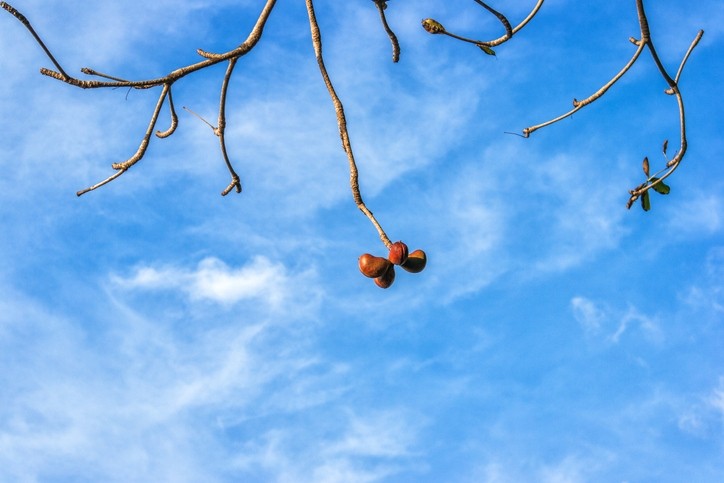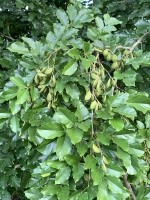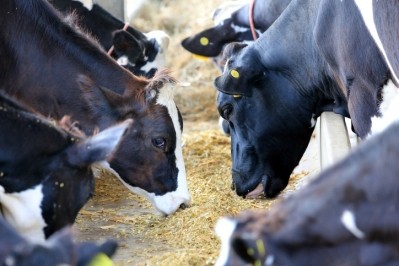TerViva seeks to grow protein on trees with pongamia production

The California-based agribusiness start-up announced at the end of March that it had closed a Series D funding round that generated $20m.
The funding will be used to support product development work, improve the company’s pipeline of products, fund feeding studies with livestock, improve the process used to remove unwanted elements from the processed product and improve efficiency said Jim Astwood, senior vice president for processing and markets.
“We’re relatively early in the product development cycle,” he told FeedNavigator. “We’ve been doing a number of livestock studies in broilers, four studies on broilers, and a number of studies in cattle so there’s definitely a regulatory component that needs to be completed both on the food side and the animal feed side.”
The company anticipates that it will be working with regulators regarding the effort to bring some of its products to market by 2020, he said.
Astwood started working with the company last autumn and is working on the product development process, he said. “My mission with the company is kind of to bring to life the products from the tree itself,” he added.
Company overview
TerViva has been working with the pongamia tree for multiple years in an ongoing effort to understand the best way to grow the tree and how to generate new protein products that could be used in feed or food, said Astwood.
The company also has been developing its role in “restorative agriculture” as the tree can be planted in areas where previous agricultural production has been halted, he said. “It’s very, very sustainable,” he added.
Currently, the company is looking at planting pongamia groves in Florida and Hawaii, he said. In Florida, the tree could provide an alternative to producers who lost citrus groves to the greening disease, while in Hawaii the plant may replace sugar cane acres.
“We can grow into former citrus groves with pongamia trees and because it’s a legume, like soybeans or peas or lentils, there’s a nitrogen fixation component to the tree,” he said. “It’s very robust and it can go into soils or geographies where there might be environmental damage or other kinds of sustainability issues.”
Pongamia beans in feed
Although the trees are spread throughout several countries Southeast Asia, the beans they produce have not been used in animal feed, said Astwood. The meal generated has a bitter taste that cattle and other production species will avoid.
“When you look at cattle, for example, if you try to feed pongamia meal prepared in the traditional way we find that the cattle avoid eating the product,” he said. “What TerViva is all about is removing the bitterness – using our technology, we’ve been able to feed animals quite successfully and remove that bitterness.”
TerViva developed a unique processing system to improve the ingredient’s palatability, he said. Adding, “The steps necessary to remove the bitterness that has an impact on palatability for feed intake – that’s kind of our special sauce is our ability to do that – that’s really what’s new about what we’re doing versus where the world was before we started.”
“In palatability studies with cattle, for example, we find that the animals are quite aggressive about taking the product,” he added.
In the ongoing feeding trials with poultry and beef, the company has been tracking elements including gain and feed efficiency against other feed proteins like soy, Astwood said. The company has been seeing “favorable results” in both broiler and cattle studies.
“When looking at the profile of the bean itself from a nutrition point of view the amino acids balance is close to pea and soy – which is not surprising because taxonomically the tree is a legume,” he added.
There also is interest in having feeding trials with pigs, but the company has not had time to run feeding trials yet, he said.
In addition to providing an alternative protein, TerViva plans to have the plant and processing method certified organic so the tree would be able to generate an organic protein meal, he said. “We’ll be able to offer the producer an ingredient that has a really superb sustainability backstory, is organic and has real nutritional equivalency to things you see in the market today,” he added.
Growing pongamia
The tree can be planted and maintained using processes similar to growing other orchard crops like apples or almonds, said Astwood. Trees take about three or four years to become productive and have an anticipated lifespan of 25 to 30 years.
“Our yield is, depending on if you’re talking protein or oil, can be as much as 10 times per acre yield what the yield is for soybeans and much more than canola,” he claimed. “As an oilseed crop, it’s extremely productive.”
In a production environment, an acre of the trees generates about 5 to 10 tons of biomass annually, he said. The tree also uses little water and is able to survive flooding.
Currently, the company sells the seedling tree and processes beans in-house using a specific method to reduce the bitterness, Astwood said. However, as the quantity of production expands the goal is to establish partnerships with other processors.
The company is focused on the US market, at the moment, but does see a global space for the potential feed ingredient, he said. TerViva also recently opened offices in Australia and India.
“Our job right now is to prove out the technology and prove our out understanding of what’s the best way to cultivate this fascinating tree,” he added.














